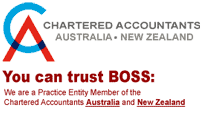One of the key factors contributing to McDonald’s immense success is its consistency in taste across all locations worldwide. Customers can rely on the golden arches to deliver a consistent experience wherever they go.
Similarly, when it comes to financial services, clients seek dependability in their lives. Once they choose your firm as their partner, they expect a consistent level of service and commitment with every transaction. People don’t engage with an accounting firm seeking adventure; they want reliability and trust.
To maintain consistency within your firm, it is advisable to establish written principles. These principles can be divided into two primary categories:
1) defining your identity and;
2) outlining the scope of your services.
These categories may go by various names such as core values, cultural components, service standards, or mission statements. Regardless of the terminology used, they serve as guiding frameworks for you and your employees to enhance client experiences and drive improvement in your business operations.
Who you are
Here are three examples of how these three services and retailers define themselves.
Twitter: To give everyone the power to create and share ideas and information instantly, without barriers.
L.L.Bean: Sell good merchandise at a reasonable profit, treat your customers like human beings, and they will always come back for more.
Zappos.com (online shoe and clothing retailers):
- Deliver WOW Through Service
- Embrace and Drive Change
- Create Fun and a Little Weirdness
- Be Adventurous, Creative, and Open-Minded
- Pursue Growth and Learning
- Build Open and Honest Relationships with Communication
- Build a Positive Team and Family Spirit
- Do More with Less
- Be Passionate and Determined
- Be Humble
What you do
The ‘what you do’ list is concerned with defining in more practical terms how you go about your business on a daily basis.
In addition to managing a single list, you may have multiple lists that cater to different aspects of your work. For instance, they might have a comprehensive list that outlines the various tasks and processes required to ensure efficiency within the office environment. This list could encompass everything from administrative duties and workflow procedures to team collaboration and communication protocols.
On the other hand, they may also maintain a separate list specifically tailored to managing work for clients. This list would be designed to track all client-related activities, tasks, and deliverables, ensuring that all client commitments are met in a timely manner and to the highest standard. Such a list would incorporate relationship management, project coordination, and effective communication with clients to ensure client satisfaction and successful project outcomes.
The ability to maintain multiple lists can serve as a valuable organisational tool, allowing individuals or teams to focus on specific areas of their work and ensuring that nothing falls through the cracks. By having distinct lists dedicated to different aspects of their work, individuals and organisations can streamline their operations, increase productivity, and ensure that all tasks and responsibilities are efficiently managed.
Here are some sample ideas:
- We’ll return phone calls and emails within 24 hours
- We’ll turn off cell phones during meetings
- We’ll review a client’s file in advance of their meeting
- We’ll make sure the client fully understands the service(s) they’re paying for
To provide a comprehensive plan, you may create multiple lists with specific details for various aspects such as phone interactions, meetings, and financial data collection. Remarkably, Four Seasons hotels adhere to a service standard even when it comes to the closure of their doors.

Where you find who you are and what you should do
To identify your values and standards, it is essential to start by examining yourself. If you made the bold move of leaving a well-established firm to establish your own, what compelled you to make that decision? Perhaps you believed that there were areas in which you could excel and provide superior service to clients compared to your previous firm. These contrasting viewpoints on client relations can serve as a solid foundation for defining your values.
Fortunately, there is no requirement for you to generate lists on your own. In fact, it is beneficial to involve your team, as they are typically the individuals immersed in the field and gaining insight into what your clients desire from your company on a regular basis.
Step 1: Begin by scheduling a dedicated day for your team to come together and engage in a productive brainstorming session. To facilitate this, ensure that all necessary materials such as flipcharts are readily available. Additionally, consider providing lunch to create an atmosphere of comfort and collaboration.
Step 2: Explain the two lists that you’re looking to create:
Our values – who we are and what we believe in.
Our standards – our blueprints, born from our values, which tell us how we should work with our clients.
Step 3: Please review the provided examples (or feel free to find others) as they serve only as illustrations and should not be replicated. Encouraging your team to develop their own examples is crucial, as it fosters a sense of ownership and commitment to values and standards rather than relying on external sources.
Step 4: Begin the process of brainstorming your company’s values. If you have a larger team, it may be beneficial to divide them into smaller groups for this exercise. There is no predetermined format for how your firm’s values should appear, but it is advisable to keep each statement concise and comprehensible. Be sure to set a time constraint to maintain efficiency.
Step 5: Streamline your values. After brainstorming a variety of ideas, convene your team to evaluate each one individually. Some will stand out as excellent choices, while others may appear redundant or simply unsuitable. It is advisable to narrow down your selection to no more than ten options, with five or six being the ideal number.
Step 6: Now that you have clearly defined your values (reflecting your identity and beliefs), it is time to focus on establishing your standards (actions and behaviours). The number of standards will vary depending on your organisation and the specific services it provides, but it is important to keep them manageable. By having a limited number of standards, they can become ingrained as second nature for your team, eliminating the need to constantly consult manuals and references.
Step 7: Elevate your team’s performance by refining your standards, just as you have done with your values.
Step 8: Step 8 follows on from the brainstorming meeting. In this step, you will communicate the refined values and standards to your colleagues using email. Additionally, you could visually display them through posters in prominently placed areas for maximum visibility.
Step 9: Communicate your values and standards to your clients by showcasing them on your website, including them in your next email newsletter, or displaying them on visible posters in your office. This will help establish a strong professional image and build trust with your audience.
An additional benefit is that by making these values and standards clear, prospective job applicants can gain insight into the type of organisation they will be applying to during their job search.
By defining who you are and what you do you’re accomplishing two big things:
- You’re giving your employees a template to follow when dealing with clients and their colleagues.
- By prioritising consistency and reliability, you are guaranteeing your clients the level of service they expect from a financial institution.




